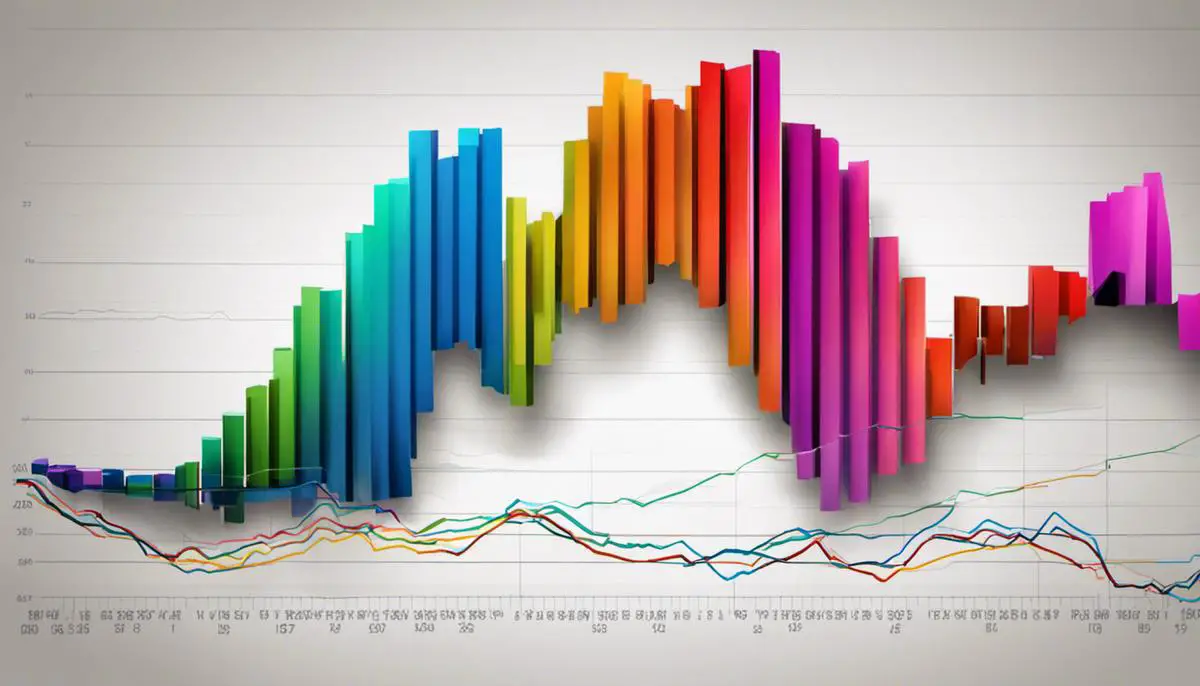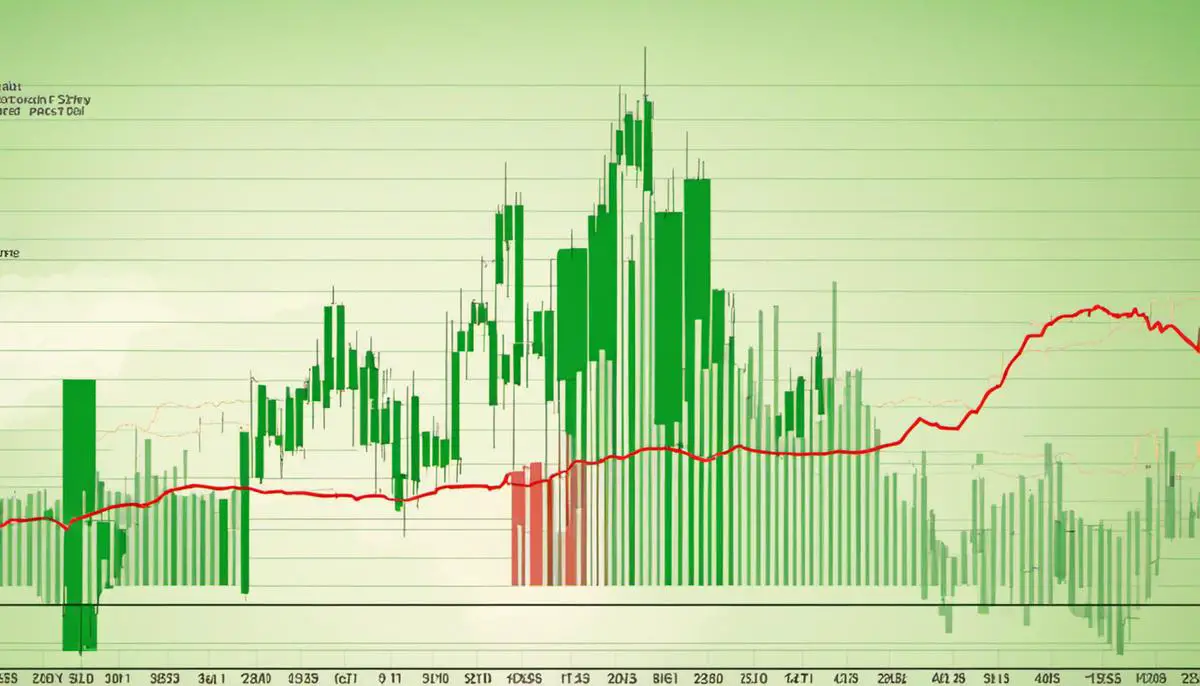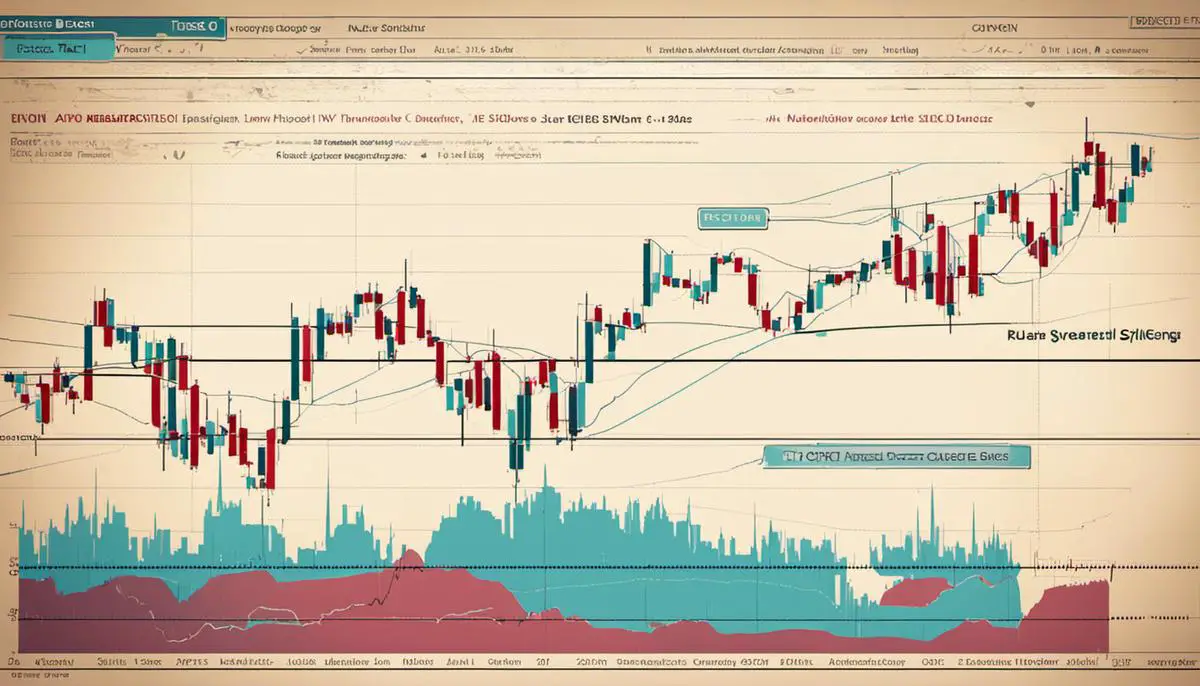The financial world is rife with myriad investment strategies, each presenting a unique blend of risk, involvement, and potential returns. Amid this spectrum, swing trading has emerged as a compelling method that intrigues both experienced and novice traders. Rather than banking on long-term market trends or frenetically bouncing from one day trade to another, swing trading carves out its distinct territory. It thrives on capturing gains from stock prices within an overnight hold to several weeks. This exploration into swing trading delves into the intricacies of this system, explicates how to identify high-potential stocks, underlines the importance of trading psychology and risk management, provides a blueprint to develop a sound trading plan, and evaluates it against the traditional buy-and-hold strategy.
Understanding Swing Trading
Across the globe’s various financial markets, an array of trading strategies have emerged, each with its unique appeal and set of advantages. At the heart of these strategies, swing trading stakes its claim, presenting a potentially profitable trading approach that stands head and shoulders above other forms. So, what precisely delineates swing trading from other trading forms? Let’s dive into this fascinating world.
In essence, swing trading incorporates the short-term purchasing and selling of securities intending to catch their forecasted swings, either upward or downward. This strategy primarily sets base in the coalescence of technical analysis and sheer patience, with trades typically lasting from several days to weeks.
One might query, why choose swing trading over other methods such as day trading or long-term investing? The answer lies in the unique virtues swing trading offers. Firstly, it provides an optimal balance – straddling the divide between long-term investing and high-frequency trading.
Unlike day trading, where split-second decisions can spell profit or loss, swing trading allows a more relaxed tempo, permitting time for adept analysis. This aspect eliminates the unnerving necessity of monitoring markets constantly and making immediate decisions, a trait peculiar to day trading. Equally, swing trading ditches the long, tedious waiting times often associated with long-term investing.
The question of profitability is one that undoubtedly graces the minds of potential traders. Swing trading, with its astute focus on technical analysis, offers trading opportunities that are typically more predictable and, hence, potentially more profitable. Unlike long-term investing, where one is at the mercy of unpredictable macro-market swings, swing trading allows for the anticipation of market trends and potential profit pockets.
An additional feather in swing trading’s cap is its suitability to both bull and bear markets – it thrives in fluidity and uncertainty. Because swing traders pick their battles carefully, they can switch between long and short positions to take advantage of the market’s directional swings, making it an adaptable and versatile strategy.
Keen on variety? Swing trading scores high, offering access to several financial markets such as FOREX, futures, options, and Cryptocurrencies. This wide array of market choices further feeds into its flexibility, making it a trading strategy that can generate opportunities across various market conditions and asset classes.
Of course, as with all strategies in the trading ecosystem, swing trading is not bereft of risks. Potential pitfalls lie in market volatility, overnight and weekend price gaps, and the requisite technical expertise. But, while these risks are heightened for newcomers, experienced traders might argue that these risks – properly managed – can be converted into opportunities.
In essence, swing trading offers a compelling balance between risk and reward – a delicate equilibrium that many traders strive for. With its rich combination of flexibility, adaptability, and use of technical analysis, swing trading stands impressive and formidable against its trading strategy counterparts.
Ultimately, the trading strategy one opts for is a deeply personal decision – determined by individual risk tolerance, financial goals, and investment experience. But for those appreciating fluidity, patience, variety, and adaptability, it’s clear that swing trading holds a specific charm and potentiality, setting it firmly apart.
It is, therefore, no surprise why a growing number of traders are being lured by the swing trading siren’s call, exploring this versatile strategy’s capacity to unlock impressive trading horizons.

Identifying High-Potential Stocks
As the landscape of trading evolves, adept traders, particularly swing traders, are always on the prowl for untapped high-potential stocks. But navigating the dynamic market and identifying such opportunities requires astute knowledge and proficiency. So how do our swing traders select high-potential stocks? Let’s delve deeper.
Essential to the swing trader’s toolkit is technical analysis. This phenomenally resourceful tool facilitates the identification of market trends by delineating patterns in stock prices and volume. Swing traders employ technical indicators such as moving averages, relative strength index (RSI) and stochastic oscillators to gauge trend strength and possible reversals. The goal: to capitalise on short-term price moves, riding the wave to lucrative outcomes.
Beyond technical analysis, fundamentals should not be dismissed. A robust company with a balance sheet showcasing significant growth potential can be a signal for sustained price movement –– a swing trader’s delight. Assessing a company’s tangible assets, liabilities, earnings and other performance metrics can reveal its underlying health, providing assurance that there’s more to it than simply a fleeting trend in stock price.
Volume is another key determinant in the swing trader’s playbook. High volume often indicates a strong investor interest, which could forecast an imminent change in stock price. Savvy swing traders use volume data as an integral part of their stock screening process, complementing it with technical and fundamental analysis to recognise potential price swings.
Sector performance also plays a clarion role. An understanding of thriving and declining sectors can guide swing traders towards high-potential stocks. A flourishing sector is likely to provide a bullish environment for associated stocks, providing ripe opportunities for swing traders.
Finally, a pulse on the macroeconomic context is paramount. Things such as changes in interest rates, inflation, job data, and even geopolitical developments can cause ripple effects through various sectors, influencing stock trends and volatility. By keeping a finger on this pulse, swing traders can swiftly adapt and position themselves optimally.
Choosing high-potential stocks as a swing trader should not be seen as a gamble, but rather a calculated risk, underpinned by systematic analysis, a fervent understanding of the market, and a dash of entrepreneurial intuition. Although intricately complex and ever-changing, the world of swing trading offers a thrilling arena for those daring enough to embrace it.
Today’s swing traders are shaping the tide of tomorrow’s trading landscape, proving that innovation, astuteness, and agility, are the pivots for success. Dextrously selecting high-potential stocks, they constantly push the boundaries, validating the prowess that swing trading requires and ensures it remains a revered strategy amongst the trading cohorts.
So march forth, swing traders of the modern era, and let your moves echo through the heart of the trading world. Simply put, in this thrilling theatre of trade, it’s your swing that will ultimately determine the profit dance.

Trading Psychology and Risk Management
Delving into the significance of trading psychology and the concept of risk management is a cog in the wheel of comprehending the effectiveness of swing trading. As entrepreneurs with an appetite for innovation in the trading landscape, mastering something as elusive as psychology can be the key to unlocking consistent returns in both uptrends and downtrends.
Trading psychology revolves around the cognitive and emotional responses a trader exhibits when actively engaging in the market. A successful swing trader is one who has mastered their emotions, maintaining a level-headed approach to decision-making, irrespective of whether they encounter wins or losses, volatility or stagnancy.
Understanding it is quintessential in swing trading as it helps traders identify and nullify any negative cognitive biases affecting their decisions. Anxiety and euphoria are two sides of the same coin in the trading world, both lethal if left unchecked. Thankfully, a swing trader armed with trading psychology knowledge is well-equipped to maintain a grounded perspective, making decisions driven by informed analysis rather than emotional impulsion.
Meanwhile, risk management is the yin to the yang that is trading psychology within the realm of swing trading. One must implement solid risk management protocols to ensure sustainability over the long run. This process involves setting predefined guidelines about the amount that could potentially be lost on single or multiple trades. It’s a dynamic strategy that aligns with market trends and individual investment goals.
Integrating risk management within swing trading helps to maintain a measure of control over potential losses. This control allows a swing trader to persist in the market, maintaining liquidity, and continuing their quest for other profitable swings. Traders employing adequate risk management can bear the brunt of multiple small losses, keeping their capital safe for beneficial trades on the horizon.
Furthermore, stop orders are an effective tool within risk management. They effectively limit losses, allowing traders to specify the price point at which a stock is to be sold if it’s moving in an undesired direction. When carefully positioned, stop orders navigate the rough seas of volatile markets, providing some semblance of order amidst the chaos.
It’s noteworthy to mention that these combined powers of trading psychology and risk management are not just strategies, but lifestyle choices. This implies a transformative journey, an evolution of adapting one’s mind and soul to the rhythms of the market.
As critical players in the robust trading landscape, swing traders leverage these elements to their advantage, creating opportunities where others see challenges. Their valuable contribution bolsters financial markets, driving growth and promoting agility in wealth creation. The essence of swing trading lies in the fusion of trading psychology and risk management – painting not just investment decisions, but a more balanced and sustainable picture of trading as a whole. Indeed, the beauty of swing trading is in its comprehensive approach, a harmonious blend of strategy and human sensibility.

Developing a Swing Trading Plan
Having delved into the captivating world of swing trading, the understanding of technical analysis, and the importance of trading psychology, it’s now time for the pièce de résistance – devising a robust swing trading plan for consistent profitability.
Key to a successful swing trading plan is a well-structured trading routine. Rather than whimsical decision-making, a sound swing trader makes use of systematic methods for entering and exiting trades. This enables a more controlled trading experience where reactionary, emotion-led decisions are mitigated.
To build a consistent trading routine, one must set consistent market analysis times. This could be either daily, bi-weekly, or weekly, but uniformity is paramount. Regular scheduled analysis cultivates discipline, attunes the trader to market rhythms, and aids in recognising recurring trading opportunities.
Another critical component is the trade setup criteria. Each potential trade should meet a predefined set of conditions based on preferred trading indicators and chart patterns. Ideal trade setups might incorporate strategies like buying the dip, breakout trading, or countertrend strategies based on market trends. Having established trade criteria ensures a clear-cut approach every time a trade opportunity surfaces.
In tandem with curating a strong trade setup, creating an exit strategy is paramount unlike many impulsive traders who prioritize entry criteria. Predefined exit rules, including both stop-loss and take-profit points, must be established beforehand to prevent holding onto losing trades or prematurely closing winning ones. Implement a profit target that reasonably exceeds the stop-loss to ensure a favourable risk-reward ratio.
Let’s not forget the importance of a solid money management plan. Allocate a specific percentage of capital to each trade to prevent the fatal blow of a single unsuccessful trade. Staying within these allocations guards against potential string of losses and maintains portfolio health.
Diversification is also a must-have strategy, irrespective of market or trading style. Rather than putting all eggs into one basket, spreading trades across different sectors or asset classes helps diffuse risk and can potentially provide multiple simultaneous opportunities.
Last but uniquely pivotal, traders must foster a continual learning attitude. The most successful traders become so, not by never making mistakes but by viewing their losses as a chance to adapt and improve their strategy. Regularly reviewing and refining the trading plan helps stay aligned with changing market conditions.
This holistic approach blends diligent planning, market analysis and risk management into a coherent trading plan, differentiating the seasoned swing traders from novices. Most importantly, it cultivates a disciplined trading approach, a necessary ingredient in the recipe for consistent profitability.
A rightly executed swing trading plan promises an exciting exploration of markets, offering the exhilaration of short-term gains with the tranquility of long-term vision. The thrilling world of swing trading beckons; it’s time to step forth and create your own trading symphony. Welcome to the dance of investment skills and intuition.

Swing Trading vs. Buy-and-Hold Strategy
– The unmatched versatility of swing trading
In the crowded cafe of the trading world, swing trading sits comfortably between the quick-footed day trader and the marathon-like buy-and-hold investor. But how does swing trading offer a refreshing twist on the menu compared to the traditional buy-and-hold strategy?
For starters, swing trading intrinsically endorses an active involvement in investments rather than a passive approach. Remarkably dynamic, swing trading operates on a medium-term basis, capturing gains within days to weeks. It contrasts the buy-and-hold strategy’s long-term nature where investors hold onto positions for years, possibly decades, capitalising on the more extensive upward trend of markets.
While the buy-and-hold strategy banks on the concept that in the long run, the markets generally rise, swing trading utilises short-term price movements, harnessing the power of market sentiment, supply and demand imbalances and other factors, to gain profit. This uniqueness makes it decidedly lucrative, embracing the market’s ebbs and flows rather than simply awaiting the high tide.
Moreover, swing trading’s emphasis on technical analysis supplements the fundamental analysis usually associated with the buy-and-hold strategy – a match made in heaven, offering valuable insights and lending potency to trading decisions.
One of the prime differentiators between swing trading and the traditional buy-and-hold strategy is the importance of having a well-structured trading routine in the former. This routine incorporates setting consistent market analysis times, establishing clear trade setup criteria and strategies along with a proven exit strategy.
Central to swing trading is also the implementation of a solid money management plan. To successfully steer the turbulent sea of market fluctuations, it’s crucial to determine an acceptable level of risk ahead of time and adhere to it with unwavering discipline. In this endeavour, diversification plays a crucial role, performing the task of a dependable lifebuoy, reducing the potential downside risk.
Staying on top in swing trading necessitates continual learning as changes in market structure and dynamics often call for corresponding alterations in the trading plan. Therefore, swing trading exhibits an inherently versatile and adaptable methodology, dancing adeptly to the market’s rhythm. This reinforces the benefits of a holistic approach to swing trading, underpinning the importance of emotional resilience, mental toughness, and sound risk management.
In conclusion, the tantalising promises and excitement of swing trading, coupled with its unmatched versatility, make it an attractive choice for those who relish dynamism and active market participation. From trend-spotting to risk management, swing trading heralds a multi-dimensional, refreshing take on the trading world and its unravaled potential.
The world of swing trading is as thrilling as it is sophisticated, constantly challenging traders to adapt, learn, and grow. Whether one is a novice trader or an experienced professional, swing trading offers an avenue to hone skills, navigate challenges, and explore the fascinating world of financial markets. The music has started; it’s time to embrace the exhilarating dance of swing trading.

Ultimately, swing trading affords an appealing blend of short-term profitability and risk management when executed with proficient knowledge and discipline. While the allure of swift gains wrestles with the demands of steadfast patience and constant vigilance, the power to harness market volatility nestles within a well-crafted swing trading plan. Combined with a judicious selection of high-potential stocks and robust trading psychology, swing traders can navigate the stock market’s tumultuous waves with relative security. Nevertheless, it is imperative to remember that every investment strategy, including swing trading, has its merits and demerits. As such, an investor’s preferences, risk tolerance, and individual financial goals should be the guiding light in selecting an approach, be it swing trading or the classic buy-and-hold strategy.



